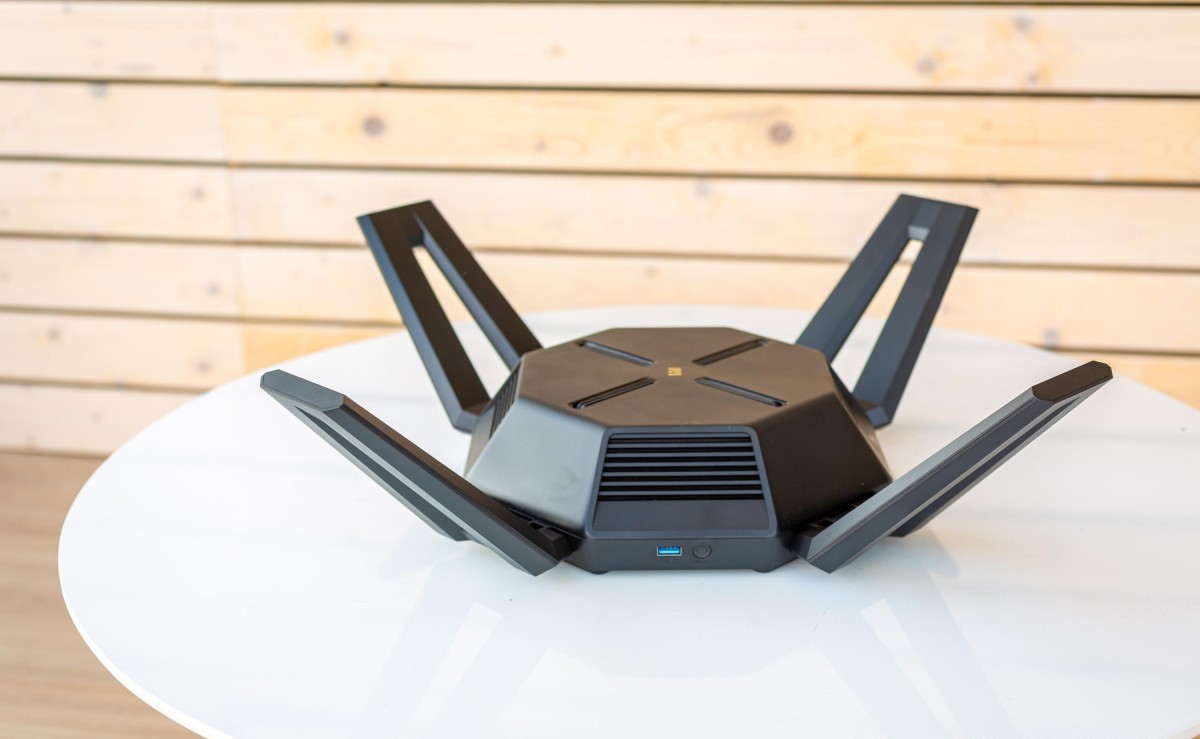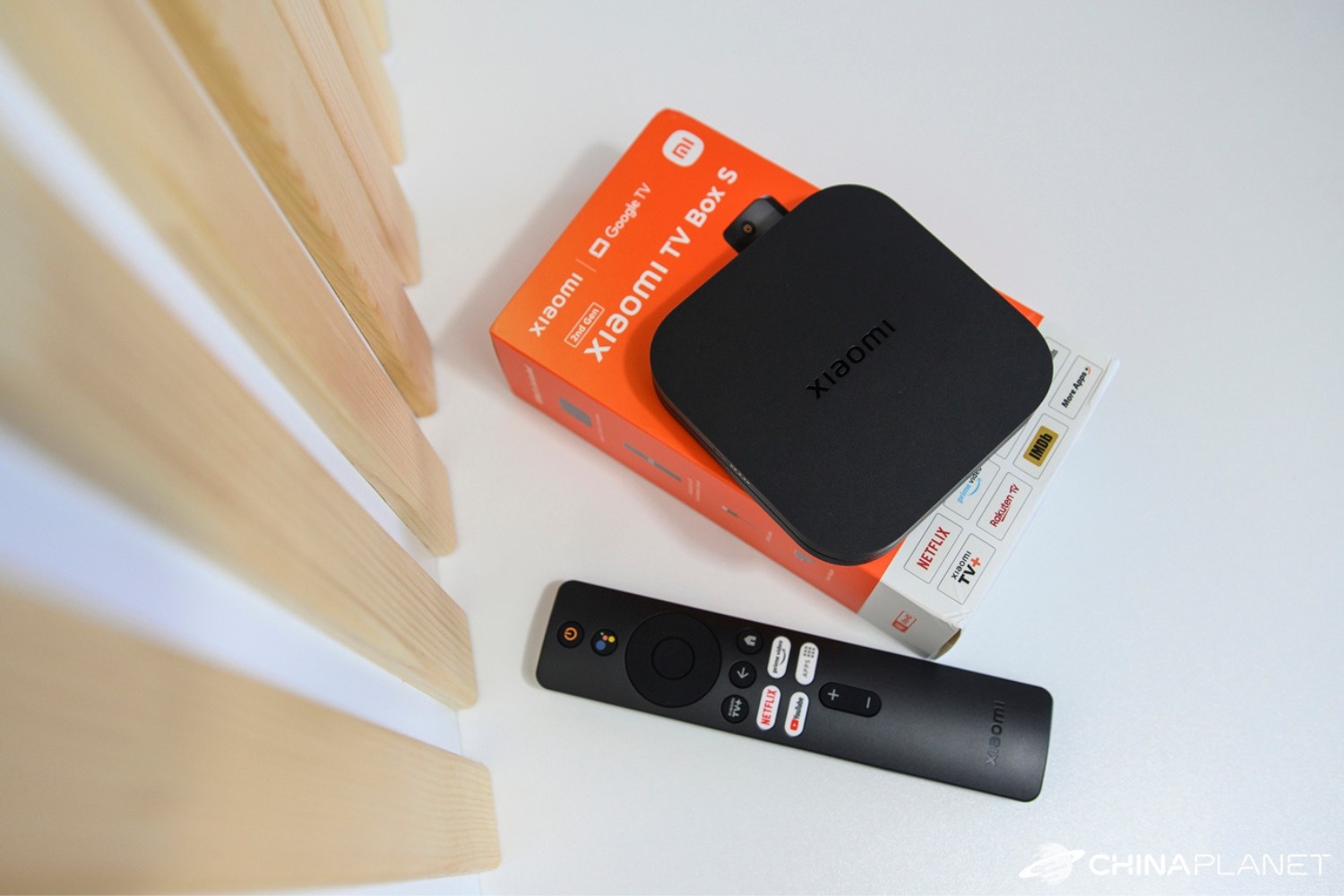Introduction
In today's fast-paced digital age, the significance of a reliable and efficient router cannot be overstated. As the gateway to the online world, a high-quality router is essential for seamless connectivity, whether for work, entertainment, or staying connected with loved ones. Among the myriad of options available, the Xiaomi Router stands out as a popular choice, renowned for its advanced features, user-friendly interface, and robust performance.
The Xiaomi Router is designed to cater to the diverse needs of modern households and businesses, offering a seamless and secure networking experience. Whether you're a tech enthusiast, a professional working from home, or a family seeking uninterrupted connectivity for various devices, the Xiaomi Router is equipped to meet your requirements.
This comprehensive user guide aims to provide you with a detailed walkthrough of setting up and accessing your Xiaomi Router, ensuring that you can harness its full potential with ease. From unboxing the device to configuring Wi-Fi settings, managing parental controls, and troubleshooting common issues, this guide will equip you with the knowledge and confidence to optimize your router's performance.
By the end of this guide, you will be well-versed in the intricacies of the Xiaomi Router, enabling you to harness its full potential and enjoy a seamless online experience. So, let's embark on this journey together and unlock the full capabilities of your Xiaomi Router.
Unboxing and Setting Up Your Xiaomi Router
Upon receiving your Xiaomi Router, the excitement of unboxing a new piece of technology is palpable. The sleek packaging and the promise of enhanced connectivity set the stage for a seamless setup process. As you unbox the device, you will find the Xiaomi Router, a power adapter, and an Ethernet cable neatly nestled within the packaging.
To commence the setup process, begin by identifying an optimal location for your router. It is advisable to position the router in a central area of your home or office to ensure uniform coverage. Once you have selected the ideal location, proceed to connect the power adapter to the router and plug it into a power outlet. The LED indicators on the router will illuminate, indicating that the device is powered on and ready for configuration.
Next, using the provided Ethernet cable, connect one end to the WAN port on the router and the other end to your modem. This establishes the connection between your modem and the Xiaomi Router, laying the foundation for seamless internet access. With the physical connections in place, you are now ready to proceed with the initial configuration.
Accessing the Xiaomi Router interface can be achieved by connecting a device, such as a laptop or smartphone, to the router's Wi-Fi network or via an Ethernet cable. Once connected, open a web browser and enter the default IP address of the router, typically "192.168.31.1," in the address bar. This will prompt you to enter the default username and password, which can be found in the user manual or on the router itself.
Upon successful login, you will gain access to the intuitive Xiaomi Router interface, where you can proceed with the initial setup, including configuring Wi-Fi settings, setting up a guest network, and customizing advanced features to suit your preferences.
With the Xiaomi Router now unboxed and set up, you have taken the first step towards optimizing your network connectivity. The next sections of this guide will delve into the intricacies of accessing the router interface, configuring Wi-Fi settings, managing parental controls, and troubleshooting common issues, ensuring that you can harness the full potential of your Xiaomi Router.
Connecting Devices to Your Xiaomi Router
Connecting devices to your Xiaomi Router is a straightforward process that enables seamless access to the internet and network resources. Whether you have smartphones, laptops, smart TVs, or IoT devices, the Xiaomi Router provides a robust platform for accommodating a diverse range of devices.
To begin, ensure that your device's Wi-Fi functionality is enabled. Navigate to the Wi-Fi settings on your device and select the network name (SSID) of your Xiaomi Router from the list of available networks. Enter the network password when prompted, which can be found on the router's label or within the router interface if you have previously customized it.
Once the correct credentials are entered, your device will establish a secure connection to the Xiaomi Router, granting access to the internet and local network resources. The router's advanced technology ensures stable and high-speed connectivity, catering to the demands of modern digital lifestyles.
For devices that support Ethernet connectivity, such as desktop computers or gaming consoles, you can utilize the available LAN ports on the Xiaomi Router. Simply connect one end of an Ethernet cable to the LAN port on the router and the other end to the Ethernet port on your device. This direct wired connection offers enhanced stability and is ideal for bandwidth-intensive activities such as online gaming and high-definition video streaming.
The Xiaomi Router's ability to accommodate multiple devices simultaneously ensures that your entire household or office can enjoy uninterrupted connectivity. Whether you are engaging in video conferences, streaming content, or gaming online, the router's robust performance and intelligent bandwidth allocation mechanisms optimize the user experience for all connected devices.
By seamlessly connecting devices to your Xiaomi Router, you are harnessing the full potential of your network infrastructure, fostering productivity, entertainment, and seamless communication. The next section of this guide will delve into accessing the Xiaomi Router interface, empowering you to customize and manage your network settings with ease.
Accessing the Xiaomi Router Interface
Accessing the Xiaomi Router interface is the gateway to unlocking the full potential of your networking capabilities. Whether you are a tech-savvy enthusiast or a novice user, the intuitive interface empowers you to customize and manage your network settings with ease.
To access the Xiaomi Router interface, begin by connecting a device, such as a laptop or smartphone, to the router's Wi-Fi network or via an Ethernet cable. Once connected, open a web browser and enter the default IP address of the router, typically "192.168.31.1," in the address bar. This action initiates a seamless connection to the router's interface, providing you with a comprehensive dashboard to oversee and configure various aspects of your network.
Upon successful login, you will be greeted by the user-friendly interface, designed to streamline the process of managing your network. The dashboard presents a wealth of information, including network status, connected devices, and bandwidth utilization, offering valuable insights into your network's performance.
Navigating through the interface, you will encounter a myriad of customization options, allowing you to tailor your network settings to suit your specific requirements. From configuring Wi-Fi parameters, such as network name (SSID), password, and security protocols, to prioritizing devices for optimized bandwidth allocation, the interface provides a seamless platform for personalizing your network environment.
Furthermore, the Xiaomi Router interface offers advanced features such as Quality of Service (QoS) settings, enabling you to prioritize certain types of network traffic for enhanced performance. Whether you prioritize gaming, video streaming, or video conferencing, the QoS settings empower you to allocate bandwidth strategically, ensuring a seamless and uninterrupted user experience for critical applications.
In addition to network configuration, the interface facilitates firmware updates, ensuring that your router remains equipped with the latest enhancements and security patches. Regular firmware updates are essential for maintaining the router's performance and safeguarding it against potential vulnerabilities, underscoring the importance of accessing the interface periodically to check for available updates.
By accessing the Xiaomi Router interface, you are embarking on a journey of network customization and optimization, leveraging advanced features to tailor your network environment to your preferences. The interface serves as a central hub for overseeing and fine-tuning your network, empowering you to harness the full potential of your Xiaomi Router.
Configuring Wi-Fi Settings
Configuring the Wi-Fi settings of your Xiaomi Router is a pivotal step in optimizing your network environment to cater to your specific requirements. Whether you prioritize seamless connectivity for a multitude of devices, enhanced security measures, or personalized network identification, the Wi-Fi settings offer a wealth of customization options to align with your preferences.
Upon accessing the Xiaomi Router interface, navigate to the Wi-Fi settings section to embark on the configuration process. Here, you will encounter a range of parameters that can be tailored to create an optimal Wi-Fi environment. The following are key aspects of Wi-Fi configuration that you can customize:
Network Name (SSID)
The network name, also known as the Service Set Identifier (SSID), serves as the identifier for your Wi-Fi network. Customizing the SSID allows you to personalize the network name, making it easily recognizable and distinct. Whether you opt for a family name, a creative moniker, or a business-specific identifier, the SSID customization adds a personal touch to your network.
Wi-Fi Password
Security is paramount in the digital landscape, and configuring a robust Wi-Fi password is essential to safeguard your network from unauthorized access. When configuring the Wi-Fi password, opt for a combination of alphanumeric characters and special symbols to enhance the security of your network. This ensures that only authorized users can connect to your Wi-Fi network, mitigating the risk of unauthorized intrusion.
Security Protocols
The Xiaomi Router offers a range of security protocols, including WPA2-PSK (Wi-Fi Protected Access 2 – Pre-Shared Key) and WPA3-PSK, to fortify your network against potential threats. Selecting the appropriate security protocol aligns with industry best practices, ensuring that your network remains resilient against unauthorized access and potential vulnerabilities.
Wi-Fi Channels and Bandwidth
Customizing the Wi-Fi channels and bandwidth allocation is instrumental in optimizing the performance of your network, especially in environments with multiple Wi-Fi networks in close proximity. By selecting the optimal Wi-Fi channel and strategically allocating bandwidth, you can mitigate interference and enhance the overall stability and speed of your wireless network.
Guest Network
The Xiaomi Router facilitates the creation of a guest Wi-Fi network, allowing you to provide internet access to visitors while segregating it from your primary network. Configuring the guest network enables you to set specific access parameters, such as bandwidth limitations and access duration, ensuring a secure and controlled guest Wi-Fi experience.
By meticulously configuring the Wi-Fi settings of your Xiaomi Router, you are tailoring your network environment to align with your specific requirements, whether it be enhanced security, personalized network identification, or optimized performance. The customization options available within the Wi-Fi settings section empower you to create a robust and personalized Wi-Fi environment, ensuring a seamless and secure connectivity experience for all connected devices.
Managing Parental Controls
Managing parental controls on your Xiaomi Router empowers you to create a safe and controlled online environment for your children, ensuring that their internet usage aligns with your family's values and guidelines. The robust parental control features offered by the Xiaomi Router enable you to oversee and manage the online activities of your children, fostering a secure and nurturing digital experience.
Upon accessing the Xiaomi Router interface, navigate to the parental controls section to initiate the configuration process. Here, you will encounter a range of comprehensive tools and settings designed to facilitate effective parental oversight. The following are key aspects of parental control management that you can leverage:
Content Filtering
The content filtering feature allows you to restrict access to specific websites or categories of content deemed inappropriate for children. By customizing the content filtering settings, you can block access to adult content, gambling websites, or other potentially harmful online resources, thereby safeguarding your children from exposure to unsuitable material.
Internet Access Scheduling
Internet access scheduling empowers you to define specific time periods during which your children can access the internet. This feature enables you to establish structured online usage patterns, such as restricting internet access during study hours or bedtime, fostering a balanced approach to digital engagement.
Device-Specific Controls
The Xiaomi Router's parental control capabilities extend to individual devices connected to the network. This granular level of control allows you to tailor internet access restrictions and content filtering settings based on the devices used by your children, ensuring a personalized and targeted approach to parental oversight.
Usage Reports and Activity Monitoring
The router interface provides detailed usage reports and activity monitoring tools, offering insights into the online behavior of your children. By reviewing usage reports, you can gain a comprehensive understanding of their internet activities, enabling informed discussions and proactive guidance regarding responsible online behavior.
Safe Search Enforcement
Enabling safe search enforcement ensures that search engine results are filtered to exclude explicit or mature content, further enhancing the safety of your children's online exploration. This feature reinforces the protective measures in place, mitigating the likelihood of accidental exposure to inappropriate content during online searches.
By leveraging the comprehensive parental control features of the Xiaomi Router, you are fostering a secure and nurturing online environment for your children. The ability to customize content filtering, internet access scheduling, device-specific controls, usage reports, and safe search enforcement empowers you to proactively manage and oversee your children's online experiences, instilling responsible digital habits and ensuring their safety in the digital realm.
Setting Up Guest Wi-Fi Network
Setting up a guest Wi-Fi network on your Xiaomi Router is a strategic step in enhancing the security and control of your primary network while accommodating the connectivity needs of visitors and temporary users. The guest Wi-Fi network serves as a segregated access point, distinct from your primary network, and offers a controlled and secure internet experience for guests.
To initiate the setup process, access the Xiaomi Router interface and navigate to the guest network settings section. Here, you will encounter a range of customizable parameters that enable you to tailor the guest Wi-Fi network to align with your specific requirements.
One of the key aspects of setting up a guest Wi-Fi network is customizing the network name (SSID) and password. By configuring a unique SSID for the guest network, you distinguish it from your primary network, making it easily identifiable for visitors. Additionally, setting a distinct password for the guest network ensures that it remains secure and separate from your primary network, mitigating the risk of unauthorized access.
Furthermore, the Xiaomi Router offers the flexibility to define specific access parameters for the guest network, such as bandwidth limitations and access duration. By setting bandwidth limitations, you can ensure that the guest network does not unduly impact the performance of your primary network, maintaining a balanced distribution of resources. Additionally, defining access duration allows you to establish temporary access privileges for visitors, ensuring that their connectivity is limited to the duration of their stay.
The segregation of the guest Wi-Fi network from your primary network not only enhances security but also provides a streamlined approach to managing guest connectivity. Visitors can enjoy internet access without gaining access to your private network resources, fostering a secure and controlled networking environment.
By setting up a guest Wi-Fi network on your Xiaomi Router, you are extending hospitality to your guests while maintaining the integrity and security of your primary network. The customization options available within the guest network settings empower you to create a tailored and secure internet experience for visitors, ensuring a seamless and controlled connectivity environment.
Updating Firmware and Troubleshooting
Keeping your Xiaomi Router's firmware up to date is crucial for ensuring optimal performance, enhanced security, and access to the latest features. Firmware updates often include bug fixes, security patches, and performance enhancements, making it imperative to periodically check for and install available updates.
To initiate the firmware update process, access the Xiaomi Router interface and navigate to the firmware update section. Here, you can check for available updates and proceed with the installation. The router interface typically provides the option to manually check for updates or configure automatic update checks at regular intervals, ensuring that you stay abreast of the latest firmware releases.
Upon identifying an available firmware update, proceed with the installation process, which typically involves a seamless and automated procedure. The router interface guides you through the update process, providing real-time progress indicators and ensuring minimal disruption to your network connectivity during the update.
Firmware updates not only enhance the router's performance but also fortify its security posture, safeguarding it against potential vulnerabilities and emerging threats. By proactively updating the firmware, you are reinforcing the resilience of your network infrastructure and mitigating the risk of exploitation due to known security flaws.
In the event of encountering network issues or performance concerns, the Xiaomi Router offers a comprehensive set of troubleshooting tools and resources within the router interface. The troubleshooting section provides insights into network status, connected devices, and potential issues affecting connectivity.
Common troubleshooting options include network diagnostics, which enable you to identify connectivity issues and address them proactively. Additionally, the router interface may offer detailed logs and event histories, providing valuable insights into network events and potential points of failure.
Should you encounter persistent network issues, the Xiaomi Router interface may facilitate the execution of network resets or the restoration of default settings, offering a systematic approach to resolving complex network challenges.
By leveraging the firmware update capabilities and troubleshooting resources of the Xiaomi Router, you are equipped to maintain a robust and resilient network environment. The seamless firmware update process and comprehensive troubleshooting tools empower you to proactively manage and optimize your network, ensuring a seamless and secure connectivity experience for all connected devices.

























